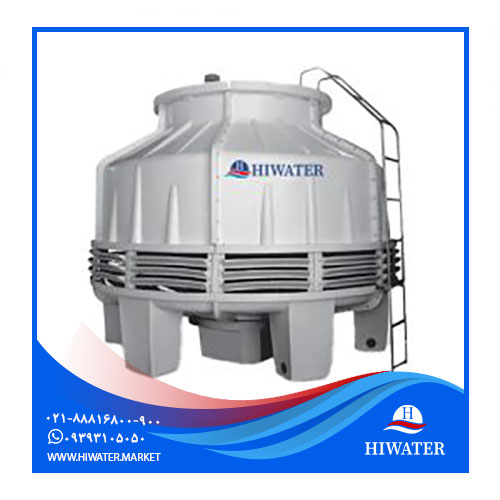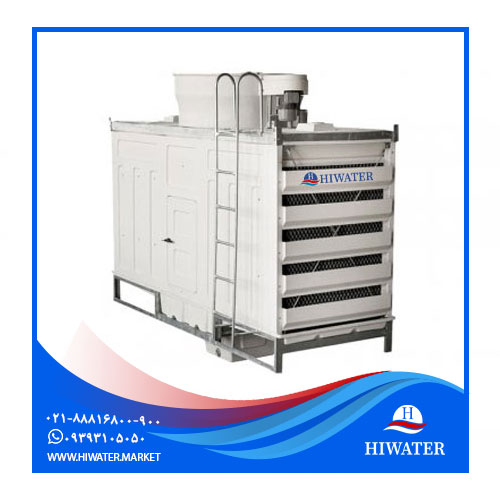Purchasing a Cooling Tower
Purchasing a Cooling Tower
A cooling tower is an industrial device that is designed to remove extra heat from products and it cools down the warm water produced by industrial operations. Therefore, this system is used to cool down systems.
Applications of Cooling Towers
Refineries
Power plants
Air conditioning systems
Industrial use of this product: Cooling towers are vital for factories, and expel heat from their machinery. These systems are especially crucial in industries, like tomato paste production, sugar refining, power plants, and steel manufacturing.
Cooling Tower Types Based on Heat Transfer Method
Open Circuit: This type of system is often found in air conditioning applications, where it cools water by facilitating contact between the water and the air. These systems are known as “wet” systems because about 1.5% to 2% of water evaporates into the air, keeping the system moist.
Dry Closed Circuit: In this system, water circulates within a sealed environment. They are known as dry cooling towers because the water only indirectly interacts with the surrounding dry air. The cooling process occurs when the dry air is indirectly affected by water.
How the Cooling Tower Works
Cooling towers work by reducing the water temperature through the evaporation of a small portion. When hot water enters the tower, it releases heat to the air, which is moved naturally or by a fan. As a result, this process causes a portion of the water to evaporate, decreasing the temperature of the remaining water that leaves the tower.
Benefits of Cooling Towers
Using cooling towers for reducing water temperature decreases water consumption because water cooled in this system can be reused indefinitely.
These devices have high quality, ensuring long-term performance.
When used correctly, maintenance and operational costs will be low.
Cooling towers are environment-friendly and do not pose any harm to humans.
Their straightforward design allows for quick and easy installation and setup.
Cooling towers are available in a variety of types, making them suitable for different environmental climates and areas.
Cooling towers are cost-efficient despite their vast capabilities.
Components of Cooling Towers
The core components of a cooling tower are its body and frame, which are commonly made from galvanized steel or fiberglass. The body supports the internal components and ensures the tower’s resistance to outdoor conditions.
The electric fan motor plays a critical role by drawing air into the tower and guiding it over the water. These fans can be constructed from various materials but most of them are made of aluminum or fibers reinforced with advanced modern technology, commonly known as FPR plastic or galvanized. Fan blades made from FPR material help to minimize energy usage due to their extremely lightweight. Additionally, by adjusting the angle of the blades attached to the fan, it becomes possible to regulate and direct the airflow entering the cooling tower.
Another component of the cooling tower is the filler, which comes in various forms. Fillers are responsible for guiding the water and air through the system. Heat transfer occurs between these two fluids within the filler. As the surface area for heat exchange within these components increases, the system’s performance improves significantly. To achieve optimal heat transfer in limited spaces, the design of the filler elements must be efficient. Honeycomb-shaped fillers, often made from PVC, are the most commonly used in cooling towers.
Another important part of the system is the louver, which evenly distributes air across the packing or filler and manages the water flow within the tower. Louvers are typically constructed from PVC or polyethylene and are placed at the air intake section of the cooling tower.
The water distribution system is another important element, consisting of all components involved in the transfer of water, such as piping, cold water basins, and nozzles.
The drift eliminator is another important part of cooling towers, operating to prevent water droplets from being carried out of the tower with the airflow. They are usually located above the water distribution nozzles, and come in various designs, including honeycomb and blade types, to suit different operational applications.
Showing 1–8 of 18 results
-

برج خنک کننده 15 تن فایبر گلاس هایواتر
Read more -

برج خنک کننده 400 تن مکعبی فایبر گلاس هایواتر
Read more -

برج خنک کننده مدور 10 تن فایبر گلاس هایواتر مدل HWPBC 10
21,125,000 تومان Add to cart -

برج خنک کننده مدور 15 تن فایبر گلاس هایواتر مدل HWPMC 15
22,308,000 تومان Add to cart -

برج خنک کننده مدور 20 تن فایبر گلاس هایواتر مدل HWPBC 20
32,955,000 تومان Add to cart -

برج خنک کننده مدور 25 تن فایبر گلاس هایواتر مدل HWPBC 25
35,490,000 تومان Add to cart -

برج خنک کننده مدور 30 تن فایبر گلاس هایواتر مدل HWPBC 30
37,180,000 تومان Add to cart -

برج خنک کننده مدور 40 تن فایبر گلاس هایواتر مدل HWPBC 40
40,560,000 تومان Add to cart


